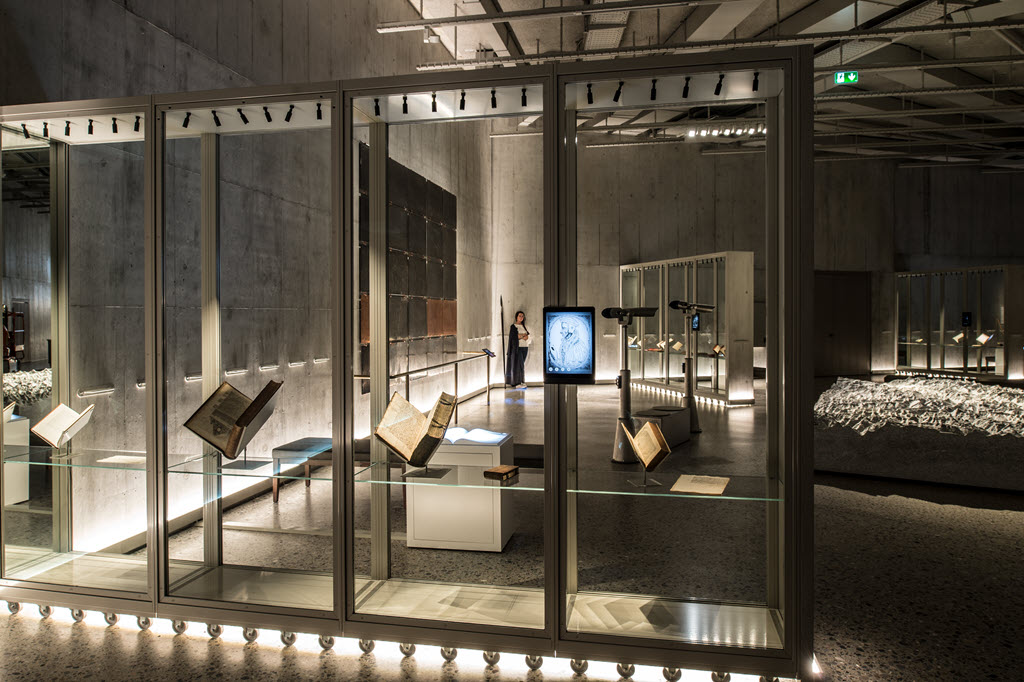
The first exhibit in the Swiss National Museum in Zurich has historical books in glass cases, a granite relief map of the Saint-Gotthard mountain range in the Swiss Alps, and four large books on pedestals with a light shining down on each.
There is magical augmented reality technology in that room.
We’re becoming accustomed to augmented reality without realizing it. Museums are installing exhibits with AR elements to overlay digital information on top of physical objects. If you watched the Olympics, the flags on the bottom of the swimming pool lanes and the world record line moving ahead of the swimmers – that’s exactly what we mean by AR.
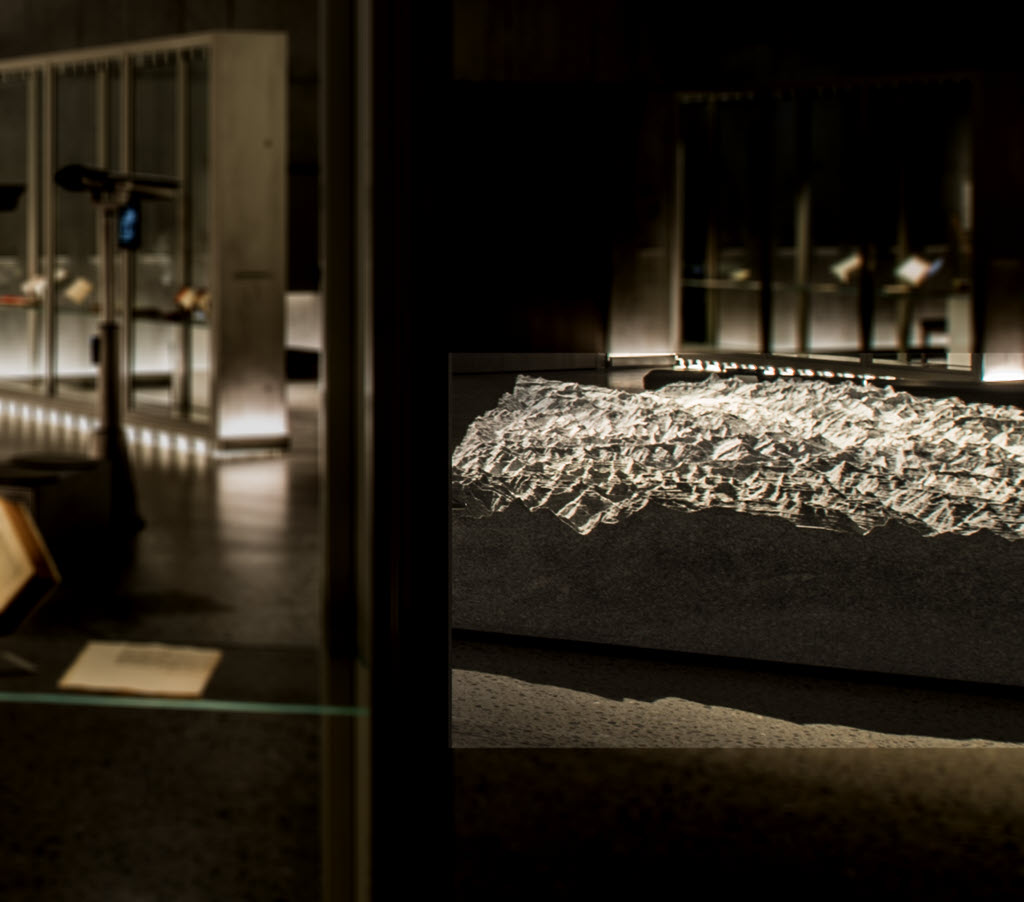
The relief map is on the right in the above picture. It’s plain grey, no markings, twenty feet long.
There is a rack at one end with iPhones. Take an iPhone from the rack and point it in the direction of the relief map. Choose a feature – City / Country / River / Mountain / Pass / Tunnel.
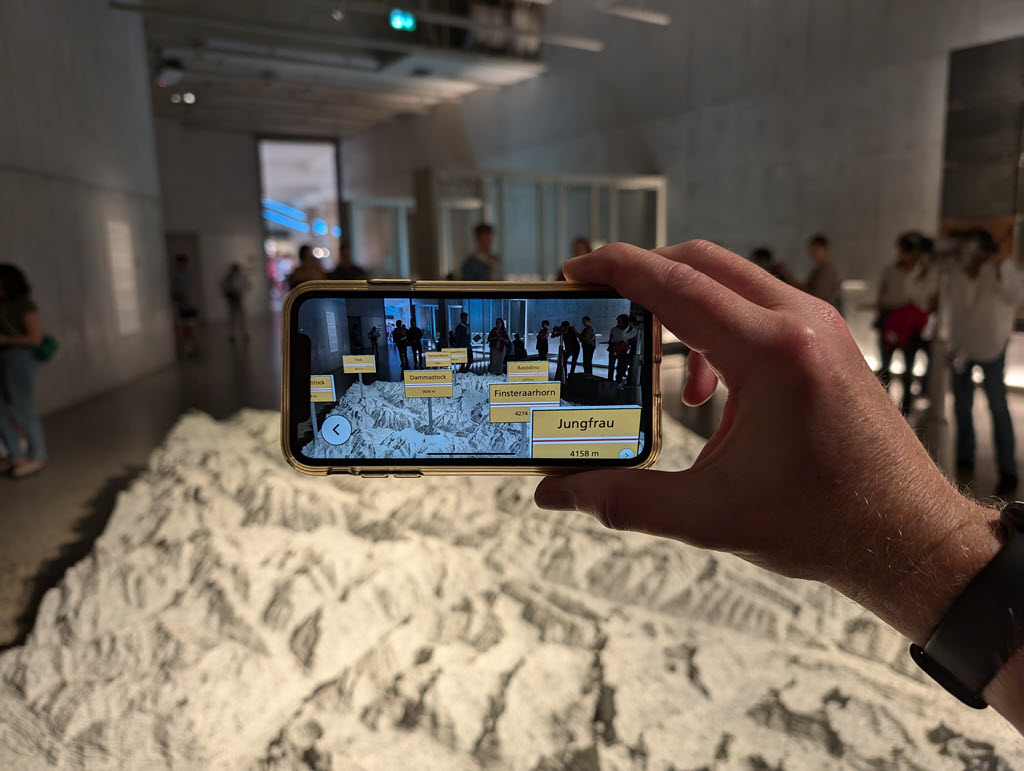
When you click on Mountain, flags pop up on the camera display with the names of the mountains. The flags are fixed in place as you walk around the map, rotating to remain readable. Click on Tunnel and you can see the path of the Gotthard tunnels under the Alps. Switch to River and threads of blue appear on the map along with the names of the rivers, including a cute animation of the water spilling into the air when a river reaches the edge of the granite.
It’s a simple bit of technology. (It’s based on Google Project Tango, an early platform that was discontinued six years ago and replaced with something more sophisticated.) The phone adds a gee whiz element to information that could probably be conveyed just as well with printed labels, but it serves its purpose. Museums want visitors to be engaged. If you walked by a relief map with printed labels on the mountains, you wouldn’t give it a second glance, but lots of people picked up the phones in the Zurich museum.
And it’s a glimpse at what to expect when the first AR glasses are available to be worn in the real world. They’ll be used for something similar – to look at a mountain range and pop up flags with the names of the peaks, or to look at a business and display the hours of operation.
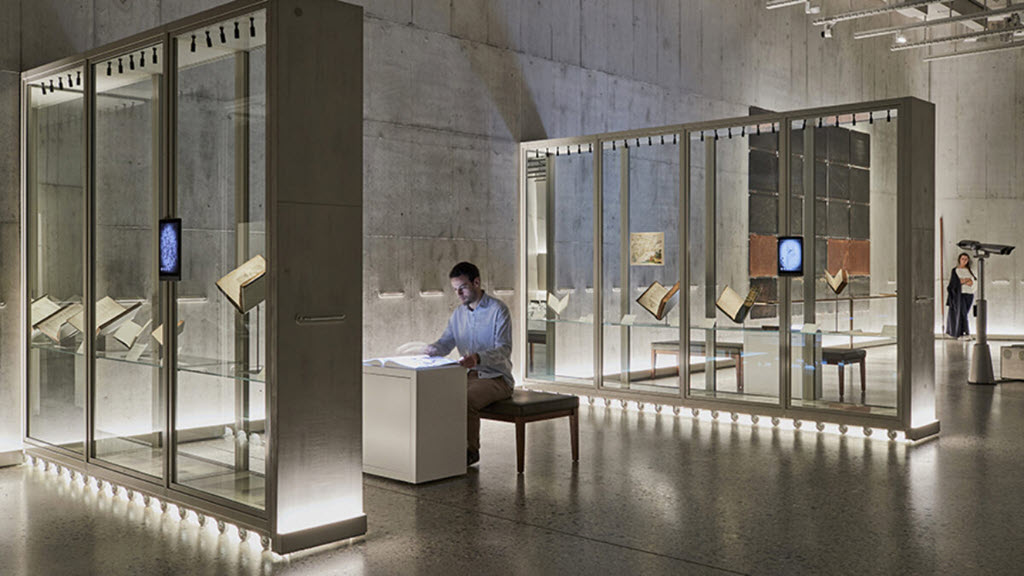
Now walk over to one of the oversize books, eighteen inches tall, each page a foot across, ten or twenty pages in each book. The pages feel like paper but it’s actually Tyvek, almost impossible to tear.
Turn the page. Maybe the next page has a beautiful full color photo of a Swiss lake. Except OMG, the clouds are moving over the lake and a boat is going by and when you tap on an inset illustration, a little animation displays and text appears on the page and when you tap on the language button in the corner the text switches between English, German, French.
The next page appears to be blank when you turn the page but words and pictures flow onto the page as you watch.
Try to fool it. Take three pages at once and turn forward. The new page displays its words and pictures. Then take four pages and turn back and, I’ll be damned, it has the correct images from four pages ago as if the pictures are printed on the paper but they’re moving and what kind of magic is this?
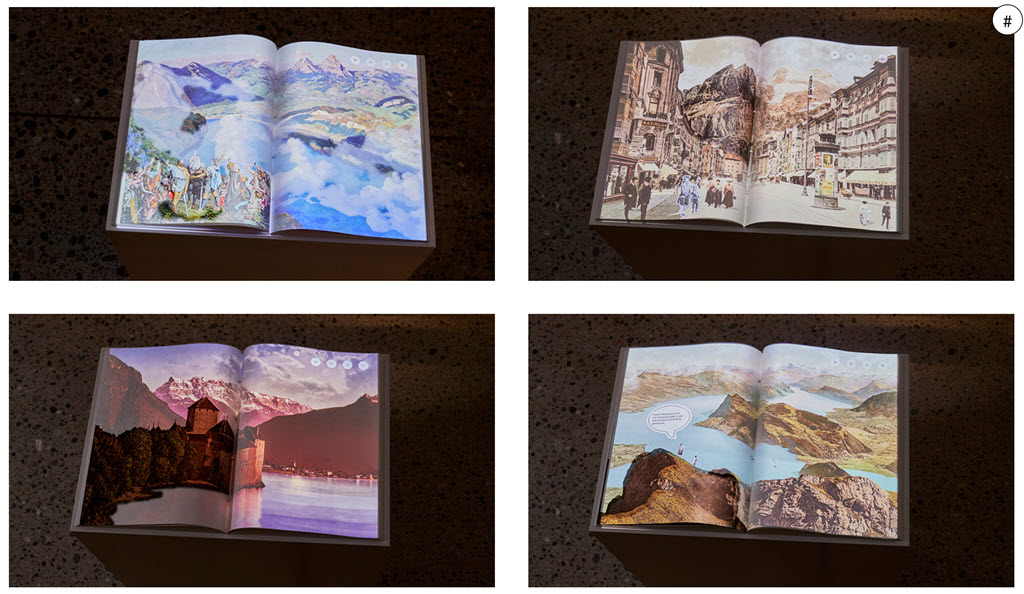
It’s as if Hogwarts paintings have been pressed into a book – mesmerizing and fun. Along the way you also might find you’ve learned something interesting about the Swiss Confederation or what Jean-Jaques Rousseau wrote about educating people in an idyllic countryside.
The museum describes the content this way: “Visitors can explore how these writings are still shaping the idea of Switzerland today by leafing through four interactive books created by iart. How do the Swiss vote? What is special about the militia system? What fruit do hard work and precision bear? How does neutral Switzerland present itself internationally? These kinds of questions are addressed in the interactive books and are answered with small, playful animations. In this way, subjects of domestic policy, economics, research and diplomacy receive a new lightness and can be explored in a playful way.”
The key word is “playful.” I watched children and adults spend long minutes with each book, smiling and pressing arrows on the pages to start animations and along the way being exposed to “Ideas Of Switzerland,” which is the name of the exhibit.
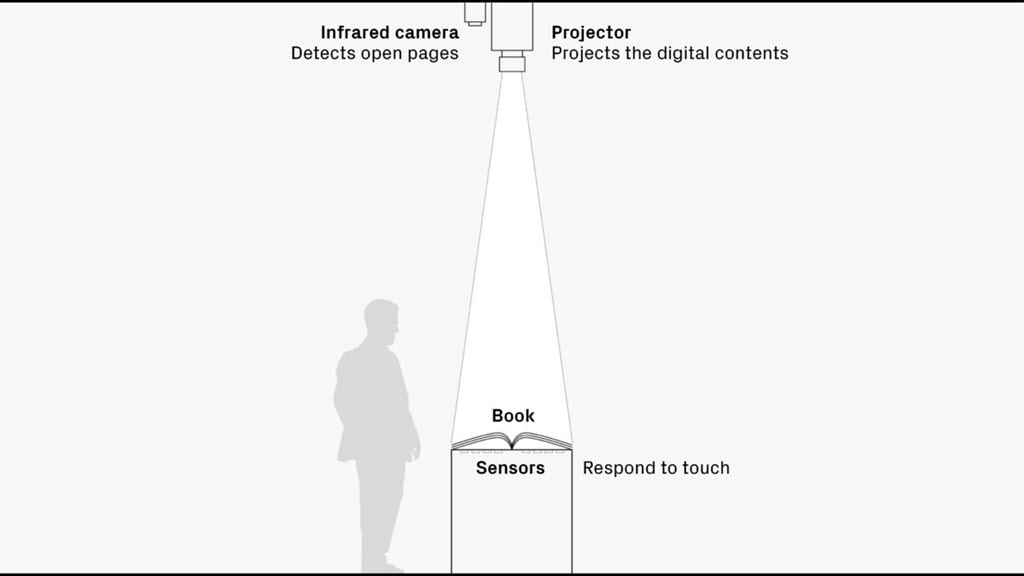
There is elaborate technology behind the presentation – a camera and projector on the ceiling, sensors in the pedestal beneath the book. Visitors are never aware of the technology. I never saw anyone look up. It’s too much fun to study the exhibit and let the magic be done invisibly.
The Swiss National Museum is one of many museums around the world incorporating augmented reality into their exhibits. The deYoung Museum in San Francisco used AR to dress visitors in evening wear ensembles for a fashion design exhibit. The Muséum national d’Histoire naturelle in Paris put visitors face to face with full size extinct animals. The Smithsonian, the National Museum of Singapore, and many more have used AR in recent installations. Here’s an article about many of the worldwide AR museum exhibits.
These are foreshadowing of the impact that AR will have on our lives when the same kind of information can be displayed as we walk around. In two weeks Meta is expected to demonstrate a prototype of its AR glasses. The CEO of Qualcomm said last week that Google and Samsung are working on mixed reality glasses linked to the wearer’s phone.
Museum exhibits, sports overlays, arrows pointing the direction to walk in Google Maps – these are all helping us understand what it means to have digital information overlaid on the real world. When the glasses arrive, they will seem natural and inevitable. We’ll be living in an augmented world before you know it.
